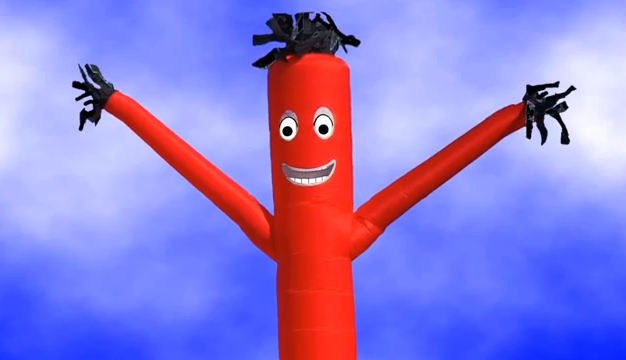Every few weeks or so, when there’s just too much bird news to cover on this blog, we take a look at the big news in the birding world from the past week or two. Here are the top news stories about birds from the past two weeks that we haven’t yet covered.
Researchers find a new way to keep birds away from crops: scary dancers

The battle of keeping hungry birds away from commercial fruit orchards and vineyards have been long and tense. In the past, some of the methods have been less than kind toward birds, but growers and researchers have found a new way that’s safe and effective: air dancers.
According to a Cornell graduate student, those dancing characters you sometimes see at car lots to grab your attention are surprisingly effective at reducing bird-induced damage to fruit.
Here’s an excerpt from the article:
Preliminary findings appear promising, as growers and researchers observed less fruit damage where pilot testing began in New York vineyards and blueberry orchards last summer. Initial fruit loss data from where the dancers were used is pending.
“My observation is that they worked better than any of the other things that were tested,” said Heidi Henrichs, a Cornell graduate student in the field of natural resources, who has been conducting fieldwork in New York state to assess bird damage to orchards across the country for the past two summers. “The vineyard managers and people who worked around these places said they just didn’t see birds like they normally do when these [figures] are dancing,” she added.
Birds, which are simply trying to look for food, are a problem for growers, so coming up with a safe and effective way to discourage their eating of fruit will save a lot of money and fruit without hurting birds is huge.
British twitching can be intense
An article in the Washington Post this week made the rounds on birding sites because it shows the strange and wild world of competitive bird-watching in Britain known as twitching. Whereas many people use birding as an opportunity to relax, reconnect with nature and live life slowly, some British twitchers are fierce, merciless and litigious.
Here’s an excerpt from the article about Lee Evans, one of the British twitchers:
Over the years, Evans has wracked up big legal bills defending himself against allegations of slander for allegedly undercounting the tallies of rivals and questioning whether they’ve actually seen all the birds they claim.
He dismissively calls Webb a “checkbook birder” — one of those who will spend any sum to reach birds spotted even on distant islands miles off the British coast. Evans also insists that he has been the victim of underhanded tricks, citing an incident when he was racing to see a rare bird in Scotland. He had lined up a plane to take him to a sighting on a remote island only to find that a group of rival birders had stuffed the palm of his pilot “with a few extra quid” to take them instead.
Sure, there are different facets of everything, but this definitely goes against some of the joys of birding. But to each his own.
Study tries to pinpoint exactly how many birds turbines kill

There have been a lot of wild numbers thrown around about how many birds turbines kill—ranging from the small to the huge. But now researchers aimed to use science to find a more accurate number.
Using 58 mortality studies about birds and turbines, they estimate “somewhere between 140,000 and 328,000 birds die each year from collisions with wind turbines.”
It’s an interesting study you can read more about here.
What citizen science taught us about House Finch eye disease and epidemics
Finally, a must-read from the last week is this great look at what an eye disease in House Finches taught us about epidemics with some insight into how citizen-science projects contributed.
You can read all about it at the article on the All About Birds blog from Cornell.



